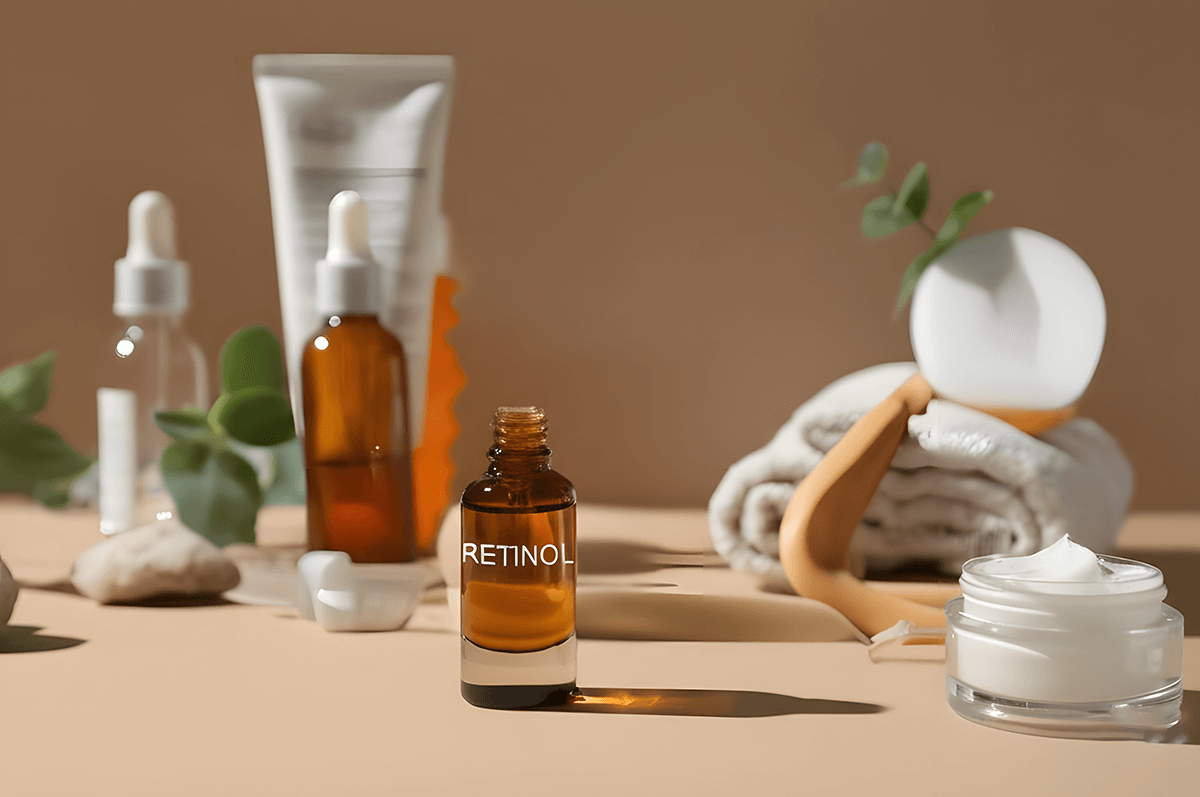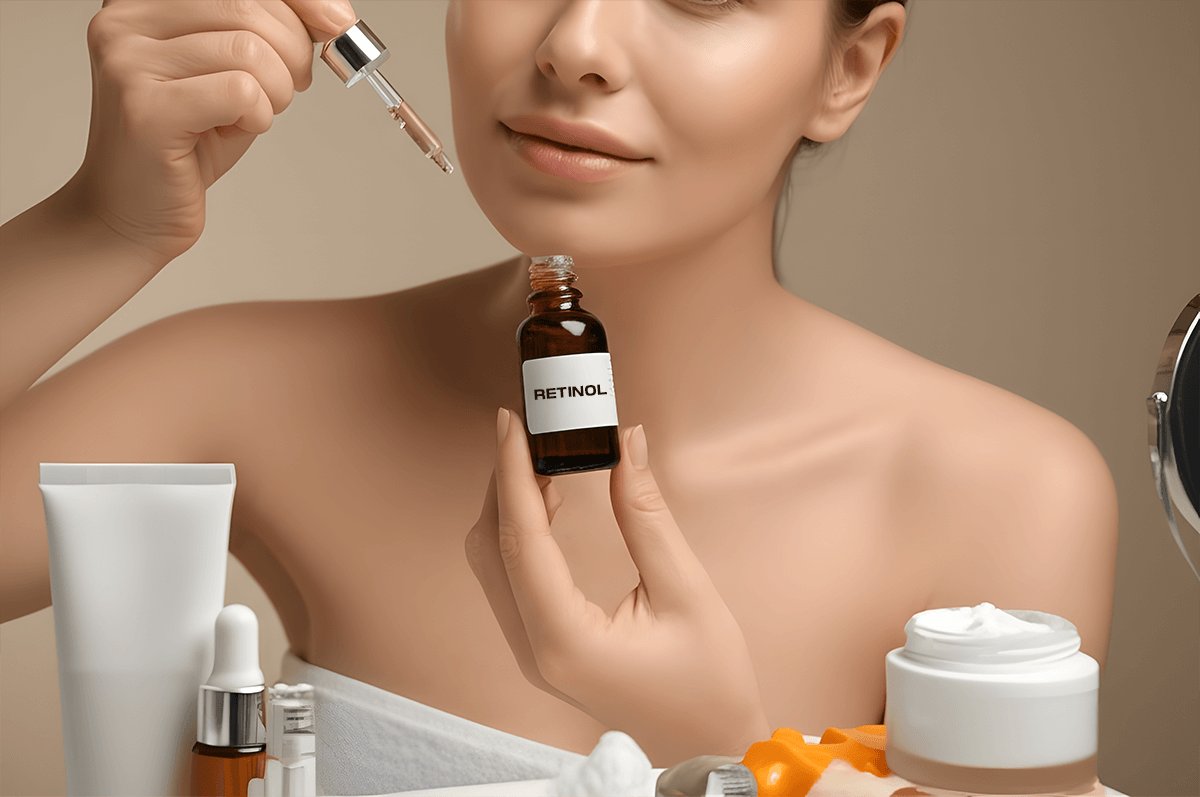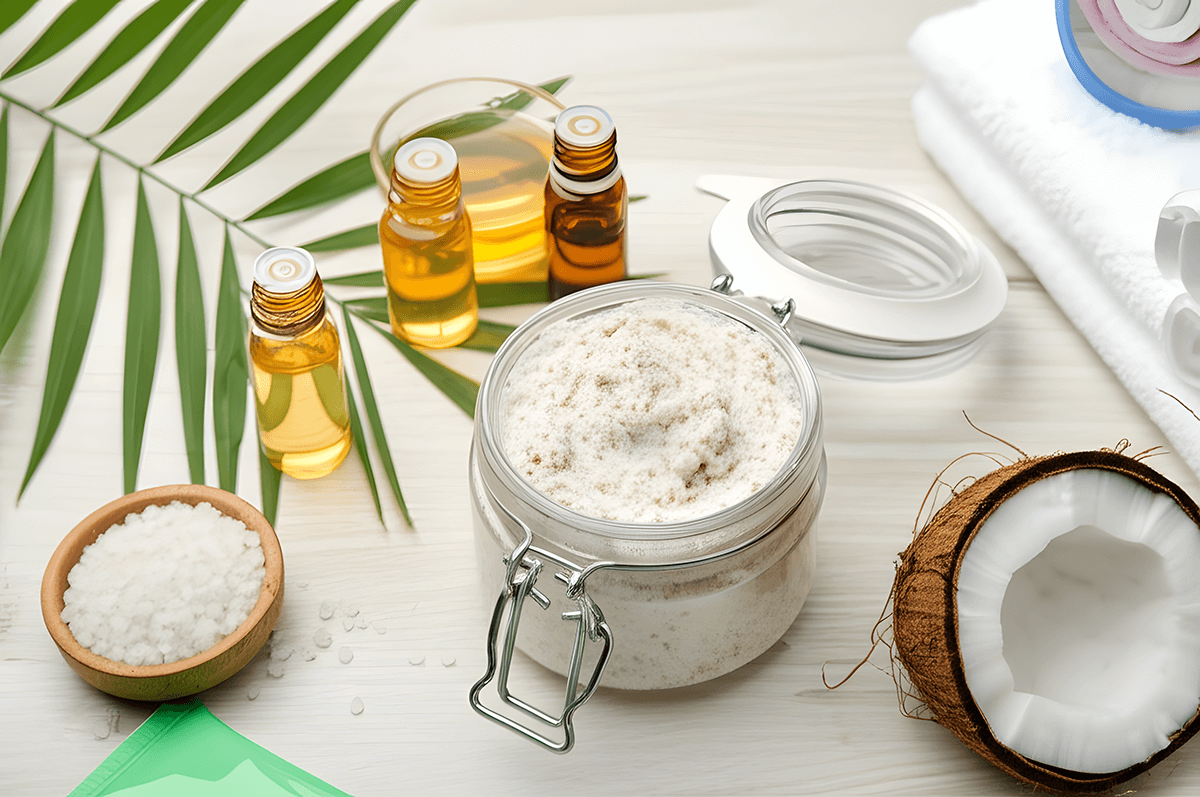Retinol, a powerful form of vitamin A, has long been hailed as one of the most effective ingredients in skincare. Whether you’re aiming to reduce fine lines, smooth texture, or even out skin tone, retinol can help deliver significant results. However, many individuals shy away from it, fearing irritation, dryness, and peeling—especially when they’re just beginning to incorporate it into their routine.
For those over the age of 30, retinol can be an essential addition to your skincare routine, as your skin’s natural turnover process begins to slow down. By using retinol, you can promote collagen production, boost skin regeneration, and maintain a youthful appearance. But like any potent active ingredient, introducing retinol to your skincare routine requires some care and a gradual approach.
In this comprehensive guide, we’ll break down how to safely and effectively start using retinol after 30, minimize irritation, and offer alternatives for those with sensitive skin.
Why Retinol Should Be in Your Skincare Routine After 30
By the time you hit 30, the skin’s natural collagen production starts to decrease. This slowdown in collagen synthesis can lead to the appearance of fine lines, loss of skin elasticity, and dullness. Enter retinol—a well-researched and scientifically proven anti-aging ingredient. Retinol helps to stimulate collagen production, promote cell turnover, and reduce the appearance of wrinkles, fine lines, and hyperpigmentation. It also helps with issues like acne and uneven skin tone.
In addition to these skin benefits, retinol also helps unclog pores and encourages the turnover of skin cells, making it an excellent ingredient for anyone struggling with blemishes, blackheads, or other signs of aging.
The Challenges of Introducing Retinol to Your Skin

Despite its numerous benefits, retinol is a potent active ingredient, which can cause irritation if not introduced properly. For those with sensitive skin or those new to using retinol, irritation, redness, dryness, peeling, and even breakouts can occur if it’s used too aggressively or if the skin isn’t properly prepared.
However, these side effects aren’t inevitable. With the right approach, you can gradually introduce retinol into your skincare routine to minimize irritation and maximize its effectiveness. Let’s take a look at the step-by-step process of how to incorporate this ingredient into your routine.
How to Start Using Retinol After 30: A Step-by-Step Guide
- Start Slow with Low Concentration Retinol
If you’re new to retinol or haven’t used it for a while, it’s important to start with a low concentration—0.25% or 0.5% retinol is a good place to begin. High concentrations of retinol, like 1% or higher, can be too harsh for the skin, especially for those with sensitive skin types.
In the beginning, apply retinol once or twice a week in the evening only. This will allow your skin to acclimate to the ingredient gradually. If your skin handles the low concentration well, you can slowly increase the frequency of application over the next few weeks.
- Choose the Right Time for Application: PM Only
Retinol should only be used in the evening because it can make your skin more sensitive to the sun. During the day, UV exposure can cause irritation and sensitivity when using retinol, so it’s best to reserve this powerful ingredient for your nighttime routine.
Additionally, using retinol in the evening gives your skin time to repair and regenerate overnight, without the added stress of environmental exposure.
- Prepare Your Skin Before Applying Retinol
Before applying retinol, make sure your skin is thoroughly cleansed and dry. This is a crucial step, as applying retinol to damp or wet skin can increase the likelihood of irritation. If you’ve just washed your face, wait for about 20 minutes to let your skin dry completely before proceeding.
- Apply a Pea-Sized Amount
A little goes a long way with retinol. Use only a pea-sized amount for your entire face. Using too much will not speed up results and can increase the risk of irritation. Apply the retinol evenly, focusing on areas where you have fine lines, wrinkles, or areas of pigmentation.
Start by applying it only to the lower half of your face—avoiding sensitive areas like around the eyes and mouth. As your skin becomes accustomed to retinol, you can gradually increase coverage to your forehead, neck, and decolletage.
- Layer Moisturizer Over Retinol
After applying retinol, it’s essential to follow up with a moisturizer. Moisturizing is crucial because retinol can be drying, and it helps to balance your skin’s moisture levels. A rich, hydrating moisturizer will not only lock in moisture but also help soothe any potential irritation caused by the retinol.
- Introduce a Buffering Technique for Sensitive Skin
If you have sensitive skin or are worried about irritation, you can use the buffering technique. This involves applying a layer of moisturizer before applying retinol. This layer of moisturizer will help dilute the retinol and slow down its penetration into the skin, which can reduce the chances of irritation while still providing the benefits of the product.
Start using the buffering technique every time you apply retinol, especially in the beginning stages.
- Be Patient: Results Take Time
It’s important to remember that retinol is not a quick-fix solution. Skin cell turnover takes time, and it typically takes 4-6 weeks to start seeing noticeable improvements in the appearance of fine lines, wrinkles, and skin texture. Continue your routine consistently, but be patient—retinol works best when used regularly over time.
How to Avoid Irritation and Peeling
Even with a gradual introduction to retinol, some people may still experience irritation and peeling. Here are some tips to avoid or minimize these side effects:
- Hydrate Frequently
Dryness is one of the most common side effects of retinol. To prevent your skin from becoming excessively dry or flaky, hydrate your skin regularly with a moisturizer that contains ingredients like hyaluronic acid, ceramides, or glycerin. You can also use a hydrating serum before moisturizing to lock in moisture.
- Avoid Harsh Exfoliants
Exfoliating can enhance the effectiveness of your skincare routine, but it can also increase irritation when used in combination with retinol. Avoid using physical or chemical exfoliants (like AHAs, BHAs, or scrubs) on the same night you use retinol. Instead, stick to gentle, non-exfoliating cleansers and moisturizers.
- Use Retinol on Alternate Days
If you’re noticing persistent irritation, it may be helpful to use retinol on alternate days rather than daily. Give your skin time to recover between applications to help it build tolerance gradually.
- Incorporate Soothing Ingredients
Consider using soothing ingredients like aloe vera, chamomile, or niacinamide in your skincare routine. These ingredients can help calm irritation, reduce redness, and strengthen the skin’s barrier.
- Avoid Sun Exposure and Always Apply SPF
Retinol makes your skin more vulnerable to sun damage, so it’s crucial to apply a broad-spectrum SPF 30 or higher every day, even on cloudy days or if you’re indoors. This will protect your skin from UV rays and prevent further irritation or pigmentation issues.
Alternatives for Sensitive Skin
If you have sensitive skin or find that you’re still experiencing irritation with traditional retinol, there are some great alternatives that can deliver similar results with less risk of irritation.
- Retinoid Derivatives (Retinaldehyde and Retinyl Palmitate)
For those who find traditional retinol too harsh, retinaldehyde (a less potent retinoid) and retinyl palmitate (the gentler precursor to retinol) are excellent alternatives. These ingredients work in a similar manner to retinol but are less likely to cause irritation or peeling. They’re great choices for people with sensitive skin who want the benefits of retinoids without the discomfort.
- Bakuchiol
Bakuchiol is a plant-based ingredient that has been touted as a natural alternative to retinol. It works in a similar way to retinol, promoting skin turnover, improving texture, and reducing the appearance of fine lines and wrinkles. Unlike retinol, bakuchiol is much gentler on the skin, making it an ideal option for sensitive skin types.
- Peptides
Peptides are short chains of amino acids that help to support skin structure and boost collagen production. They’re a fantastic option for anti-aging and can help reduce the appearance of fine lines and wrinkles without the irritation often associated with retinol.
- Vitamin C
For those who want to address signs of aging, hyperpigmentation, and fine lines, vitamin C can be an excellent alternative. It promotes collagen production and brightens the skin, though it doesn’t have the same impact on skin texture as retinol. Pairing vitamin C with a gentle exfoliant can be a great way to keep your skin glowing.
Conclusion
Incorporating retinol into your skincare routine after 30 can work wonders for your skin, addressing everything from fine lines and wrinkles to pigmentation and texture issues. However, because of its potency, it’s essential to introduce it slowly and properly to avoid irritation and peeling.
By following the step-by-step guide outlined here—starting with a low concentration, using it sparingly, moisturizing generously, and being patient with the process—you can maximize the benefits of retinol without compromising your skin’s health. And, if retinol is too harsh for your skin, there are plenty of excellent alternatives like bakuchiol or peptides that can provide similar anti-aging effects without the irritation.
Remember: consistency is key. With the right approach, you’ll be on your way to smoother, more youthful skin in no time!



